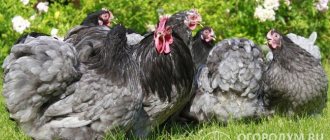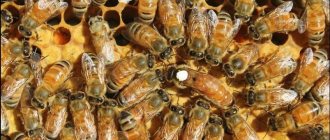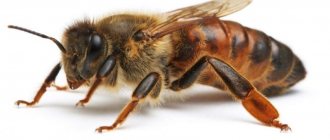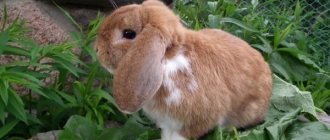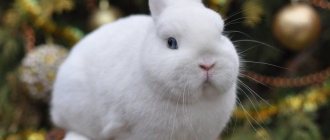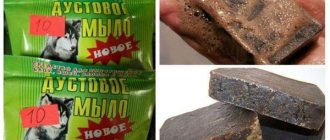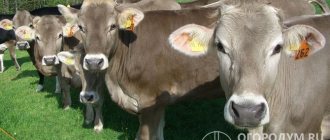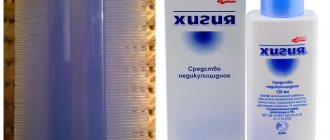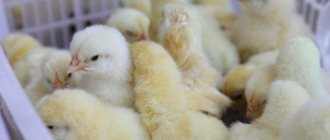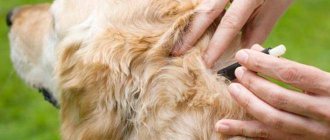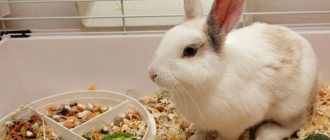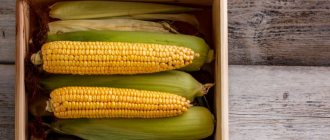Breeding history
Dwarf Cochin chickens were bred in China and were bred only in the emperor's palace. The Chinese monarch valued exclusively the blue variety of the breed.
These chickens first came to Europe in 1860 as a trophy for Queen Victoria of Great Britain during the destruction of the imperial palace in Beijing.
The fate of the English ornamental chickens is unknown, but in 1884 the miniature birds were reintroduced to England by Chinese traders.
Today, Chinese dwarf chickens are actively bred throughout the European continent, including in Russia. Based on ethnicity, domestic farmers gave the chickens another name: “Beijing bantam”.
Decorative dwarf Cochin is a variety of ordinary, classic Cochin and differs from its large relative only in size. Read in detail in the article “Description of the Cochin chicken breed.”
Historical reference
Large chickens lived on the territory of Indochina, which became the ancestors of the Cochins. The breed itself received its name from the area located in Vietnam - meaning the region of the same name. True, today no one can guarantee that the chickens come from there. The Vietnamese origin is just a theory, like another one that claims that the homeland of the Cochins is in China.
The breed was registered in the 19th century, and birds from the east arrived in European countries in 1843; Kokhs were brought to Russian territory in the last years of the 19th century. Domestic poultry farmers appreciated the new birds and began to use them to breed new breeds belonging to the mixed type - meat and egg.
At the moment, Cochins cannot be called popular; in industrial breeding (large poultry farms) they have long been replaced by broiler crosses, which are distinguished by better precocity. But it’s also quite difficult to call the Kokhs endangered. The bird is very popular among owners of private farms - here birds are loved for their high endurance and ability to lay eggs in the cold season in a room without heating.
Distinctive features
Description of appearance
Mini Cochin chickens have a wide and short body, slightly tilted forward. The bird's height does not exceed 50 cm. The body is low, which gives the impression that the chickens have no legs.
The plumage of Cochin chickens is soft, consisting of 2/3 down and 1/3 feather. The feathers are large and lush, on the back and tail - crescent-shaped. Due to their more voluminous plumage, females appear larger in appearance than males.
The Cochin rooster has a small head, a small single leaf-shaped comb, developed lobes and red earrings. The chicken has a small comb, undeveloped lobes and earrings.
The eyes are orange-red, deep-set.
The neck is short and stocky with a full mane of feathers.
Small wings are pressed tightly to the body.
The feet are low, with heavily feathered shins and metatarsals in the form of a “cuff”. Cochin chickens with black feathers have dark feet with yellow soles. All the rest have yellow paws.
Cochin roosters have a small but bushy tail with short braids. Females have a short tousled tail.
Colors and varieties
Due to their fluffy and squat appearance, mini Cochin chickens are often called rolling feather balls.
Based on the type of plumage, dwarf Cochins are divided into two types: smooth and curly. The color of chicken feathers is varied: fawn, white, black, striped, blue, partridge.
There are two types of breed standards: “English” and “German”. In Russia, mainly German Cochins are bred.
Deviations in the breed standard are: narrow body shape, long and flat back, as well as chest, high stance, excessively long tail and scanty paw feathering on the metatarsus.
Black Cochin chickens should not have white spots; white birds may only have a yellow tint on their feet.
Temperament
Small Cochin chickens have a soft, docile character. They tame well and are easy to handle when contacted.
Birds are graceful and not prone to aggression. Cochins are partly phlegmatic and like to be secluded from other birds.
Breed characteristics of roosters
The rooster of this breed has a small and beautiful head, on which there is a strong but short beak.
The rooster's comb is simple, stands straight, and is small in size. Regular teeth with deep cuts are clearly visible on the comb. The bird's eyes can be either yellow or orange-red. They are deep-set, so they may look somewhat sunken.
The rooster's face is large and red. The earlobes are small, narrow and red. The earrings are painted the same color and are well rounded. The bird's neck is very short and stocky. A lush mane grows on her, falling over her shoulders.
The body of the rooster is wide and deep, from the outside it seems massive. The back is short and wide, with a convex line rising upward. The loin is quite wide, rises steeply to the upper part, and has lush plumage in the shape of a “pillow.”
The rooster's tail is small but bushy. The braids are short and soft. They completely cover the tail feathers, but their length is the same as the braids. The chest is very deep and rounded. Due to the thick plumage, the belly appears full and round.
Mechelen Malin chickens are becoming more and more common in Russia. Do you know the reasons for this?
Sundanesian fighting chickens are ready to fight to the last! You can find out more about them here.
The wings are characterized by their small size. They sit high on the body and completely “sink” into the plumage on the lower back. The lower legs are long and very strong. They have lush plumage, forming loose “pillows”. The hocks are just as strong, lushly feathered on the front. Their color depends on the color of the entire plumage of the bird.
Appearance of chickens
The figure of the Dwarf Cochin hens is set lower, so it looks stocky.
Chickens have a very short tail and a deep chest. These characteristics create the impression of a more stocky and massive body shape.
The plumage of chickens is usually more abundant, especially in the lumbar region. The chicken's "pillow" is positioned in such a way that its middle part forms the highest point on the tail-back line. The plumage on the tibia and metatarsus is more abundant. The body itself is slightly tilted forward, and the head is even smaller.
As for the color of the chicken, there are many options: from fawn to completely black. However, most often you can find golden and partridge individuals.
Invalid signs
Often, Dwarf Cochin chickens exhibit signs that do not meet breed standards. These include the following:
- narrow body and high waist,
- the back and chest are long and flat,
- a long tail that is not in the shape of a circle,
- white earlobes,
- dark colored legs
- scanty plumage on the metatarsals,
- dark coating on the beak of light-colored individuals.
External characteristics
Farmers familiar with the standard Cochin specimen often mistakenly believe that their smaller version has the same characteristics. Actually this is not true. Klushi have their own individual characteristics, both in appearance and in productivity, character, and other characteristics.
Let's look at what makes their appearance special.
Exterior of Cochin dwarf chickens
- First, let's look at the body features. Feathered beauties have an unusual body shape. It is set quite low, has a V-shape, due to the deep chest, graceful neck and short back. The breast is round and well developed. The thighs and shins are also pronounced.
- The curvaceous shape is emphasized by the rich plumage, which extends not only throughout the body, but also on the paws. The tail and wings are miniature, short, the lower part of the body is covered with lush down. Due to the fact that the lower part of the body and legs are richly feathered, the legs are almost invisible under them, and it seems that the birds are crawling and not walking on the ground. Thanks to the presence of lush plumage, the quonkas look much more voluminous and larger, although their weight is very small. The average dwarf hen can weigh around 700 grams.
- Cochin babies have a miniature head in comparison with the size of their body. The earlobes are light shades, and the neat comb and round earrings are red. Small, straight and wide beak.
Exterior of Cochin dwarf bettas
- In terms of their physique, the leaders of the herd differ from the ladies. Their body is stocky, more elongated than that of chickens. The chest is less voluminous, the neck is long. The landing is also squat due to very short legs. In terms of weight, adult males also differ, by about 100-150 grams.
- The heads of the leaders are as small as those of the quonkas. The only difference is that they have a more developed comb and earrings. They also have large eyes, the color of which can vary depending on the color.
- The plumage is no less magnificent than that of winged beauties, but the only difference is that roosters have a more pronounced tail and wings. The paws are also covered with thick feathers, which gives the impression that they are not there at all.
Color options
Baby Kochs come in a variety of colors, just like their larger relatives. Let's look at what colors winged dwarfs come in.
- White.
According to the standard, black chicks must be covered with completely white feathers and the same down. The snow-white color does not allow the presence of any inclusions.
- Black.
A contrasting color option – the quoits are monochromatic, black with a greenish tint. The presence of gray fluff and feathers is acceptable in the lower part of the body. Coal-dark blackbirds are distinguished by their red-orange, rich eye color.
- Fawn.
Very popular color. The birds are dressed in fawn coats, reddish, with lighter down. The eyes of such individuals are also orange, rich in color. The legs and beak are gray-yellow. Fawn may have an uneven shade of fur coat, but the presence of inclusions from a different color range is unacceptable and is a reason for culling.
- Blue.
Incredibly beautiful variety of colors. The feathers are gray with a blue tint, of equal intensity throughout the body. Only the fluff is several shades lighter. Blue crumbs are few in number, and therefore are valued much more for their unique decorative qualities.
- Birch.
The name itself suggests that the fur coats of the cow-clowns are painted in black and white shades. Birch laying hens are also unique because of their beautiful striped pattern on their manes.
- Partridge.
An interesting variety. The fur coats are similar to those of wild partridges, which is why this species got its name. There are various shades - from chocolate to yellow.
Puberty and laying
The decorative nature of chickens is rarely combined with excellent user qualities, such as early maturity and high productivity. Miniature laying hens are no exception. The winged Chinese Cochin dwarf females begin laying eggs from about the 7th month of life.
They produce tiny eggs, about 30 grams each. Incubation units may be larger. During the first year of laying, you can get about 70-80 eggs in a brown shell from mini-layers.
Reviews
Farmers note that Cochins are beautiful in appearance; it is not a pity to grow them on your farm just for the sake of contemplation. Yes, their meat is very tasty, but obtaining it requires a lot of time and feed costs, which makes breeding Kochs extremely expensive. In addition, breeding is also problematic, since it is impossible to obtain purebred chickens at home. Therefore, new livestock will have to be purchased from farmers who breed rare birds. And this costs a lot of money. Therefore, before buying chickens of this breed, you should think twice and evaluate your capabilities.
Conclusion
The main advantage of Cochins is their external beauty and natural grace. They will become a decoration of the courtyard. If we compare Kokhs with other universal types of chickens, then their productive qualities make it possible to keep chickens not only as the main decorations of the yard, but also to obtain tasty meat and eggs.
Hatching instinct
Chinese hens can serve as an example for some representatives of the animal world. Selfless quons happily deal with the issues of motherhood, take good care of the hatched chicks and help them settle into this world. Each year, miniature mothers may express the desire to hatch eggs several times. But this does not mean that breeding Chinese is easy.
Only professionals or experienced poultry farmers can breed this variety. Difficulties arise not so much at the stage of raising the cubs, but during the process of fertilization of the testicles.
The formation of the parent family is carried out in a ratio of 1:4, that is, 1 rooster is needed for 4 hens in order to obtain a high percentage of fertilized eggs.
In addition, it is important to strictly follow the rules for storing incubation material, since the slightest disturbance in temperature conditions can lead to the fact that the egg will not hatch.
Breeding
Females of the Dwarf Cochin breed are good brood hens, so the use of an incubator is not necessary. However, this does not mean that raising these chickens is easy.
Problems arise at the stage of fertilization of eggs and selection of incubation material.
If you are not confident in your abilities, then it is better to buy chickens from trusted breeders.
To obtain eggs suitable for hatching, one rooster is raised for four hens. If there are more females, the percentage of unfertilized eggs will increase significantly. Also, when selecting eggs for incubation, the weight of the egg is important - it is necessary to select only those that weigh at least 35-40 g. It is also important that they are of the correct shape, without deformation, with a strong shell. In addition, the storage periods of hatching eggs must be strictly observed.
After the chicks hatch, the mother hen will care for them, warm them and train them. You can completely trust your chickens to her and not worry that the bird will abandon or run over them.
Dwarf Cochin chickens grow very slowly, gaining up to 70 g of weight per week. Growth continues until 7-9 months of life. The chicks are fed in the same way as chickens of other breeds - grain flour, mashed boiled yolk and cottage cheese, etc.
Peculiarities
This breed differs from other chicken breeds in its unusual appearance. Dwarf Cochins are somewhat reminiscent of feather balls.
This impression is created due to the rounded shape of the body and feathered legs, so from a distance it may seem that the chickens do not walk, but crawl around the yard. Some breeders like this particular property of the breed.
In addition to their pleasant appearance, chickens are characterized by a good-natured disposition. They quickly get used to their owner and are happy to be held. That is why the breed will be an ideal acquisition for any summer cottage.
Unfortunately, the lush plumage of this breed requires additional care. The breeder must ensure that the bedding is clean so that droppings and food residues do not cling to the beautiful plumage of this breed. In addition, birds should roam in a clean yard, so it is better to use gardens or lawns with short-cut grass for these purposes.
Character
The dwarf Cochin is not only beautiful, but also has a wonderful disposition. Chickens are calm and graceful, not prone to aggression, but on the contrary, they can remain indifferent even in stressful circumstances.
Kochs are tame, literally. They are very affectionate, quickly get used to people and painfully tolerate a change of owner.
Conditions of detention
Cochins are dwarf birds that love freedom. Therefore, it is better to keep them on the floor in closed and spacious poultry houses. Planting density: 3-4 individuals per 1 m2. With denser living conditions, chickens may get bent wings.
The walking area for Cochin chickens is fenced with a net no more than a meter high - they cannot fly. The walk should be spacious, at the rate of 2 m2 per adult bird.
Mini Cochins can hardly tolerate the heat, so in the summer a shady canopy from the sun's rays is installed in the enclosure. The fenced area is covered with a layer of sand or sown with grass - chickens love to graze on a green lawn or lawn.
Feed trays and vacuum drinkers are installed in the walking area.
Temperature and light conditions in the chicken coop
The optimal temperature in the poultry house is 20-18°C. Thanks to their thick plumage, dwarf Cochins easily tolerate temperatures down to -10°C. At lower temperatures, care should be taken to insulate the chicken coop using infrared heaters.
During the construction of the chicken coop, the internal surfaces of the walls are sheathed with mineral wool and the ceiling is insulated with a two-layer coating with filler. To prevent the entry of street moisture, it would be a good idea to attach a vapor barrier film to the outer walls.
The chicken coop should be illuminated at least 12 hours a day. In winter – 12-14. Additional lighting is provided by incandescent lamps and IR lamps.
Air humidity is about 65%. When the humidity is low, a humidifier is used; when the moisture content is high, normal ventilation of the room is ensured.
The combination of dampness and drafts is especially harmful to Cochins. Chickens become lethargic, huddle together, and mold easily attacks the depressed bird.
Ventilation arrangement
To maintain optimal temperature and humidity, ventilation is installed in the poultry house.
Natural - normal ventilation through door or window openings, holes in entrance doors (must be covered if necessary), and a supply and exhaust pipe system in the walls or ceiling.
Forced - a fan in the window opening to extract air from the room, internal household fans.
Litter layer and other nuances
The lush plumage of Cochins requires additional care. To prevent the beautiful feathers on the legs of chickens from becoming stuck with droppings and leftover food, you need to keep the litter clean and dry.
The best raw materials would be to use peat or bedding with bacteria.
Peat absorbs moisture well, retains heat and eliminates odors. Used for 3-4 months, after which it is replaced with a new layer.
Fermented litter destroys ammonia, generates heat, and converts waste into compost. Changes once every few years.
The thickness of the litter layer in summer is 8 cm, in winter up to 15 cm.
Additional arrangement of the chicken coop:
- low perches for chickens to spend the night,
- nests at the rate of: 1 per 6 laying hens (installed in dark and secluded places),
- feed trays (separate for wet mash and dry food),
- vacuum drinkers for chicks and nipple drinkers for adult birds,
- spacious containers with ash and sand for cleansing from parasites.
Disinfection as a means of combating parasites
The most dangerous things for Cochin chickens are feather eaters, ticks, and lice. Often the inability to get rid of insects leads to the death of the bird.
To prevent parasitic and infectious diseases of chickens, the poultry house is disinfected.
Complete disinfection is carried out at least 2 times a year. Includes three processing stages:
- removal of droppings, feathers, food and bedding residues, wet cleaning of the premises with detergents or apple cider vinegar with water, drip irrigation of surfaces with disinfectants Monclavit, Bactericide, Virocide, Glutex.
It should be noted that cheap industrial disinfectants (caustic soda, formalin, xylonafte and creolin) are toxic to chickens and humans.
Additional processing
As a preventive measure, traditional treatment methods can be used every 2 months: lime whitewashing of walls or treating the floor with hydrochloric acid with potassium permanganate (5:1).
A solution of crystalline iodine, aluminum powder and water (10gx1gx1.5ml) is also suitable - during the reaction steam rises, which is harmless to chickens.
It is mandatory to treat feeders, drinkers, and equipment - 1-2 times a week with a 2% solution of soda ash, hydrogen peroxide or a solution of potassium permanganate.
Proper and timely disinfection of the chicken coop will eliminate possible sources of infection.
Incubation
For incubation, it is necessary to select eggs weighing at least 30 grams: smaller ones will not produce chicks. The rest of the recommendations are standard.
Table of temperature and humidity modes
| Period |
